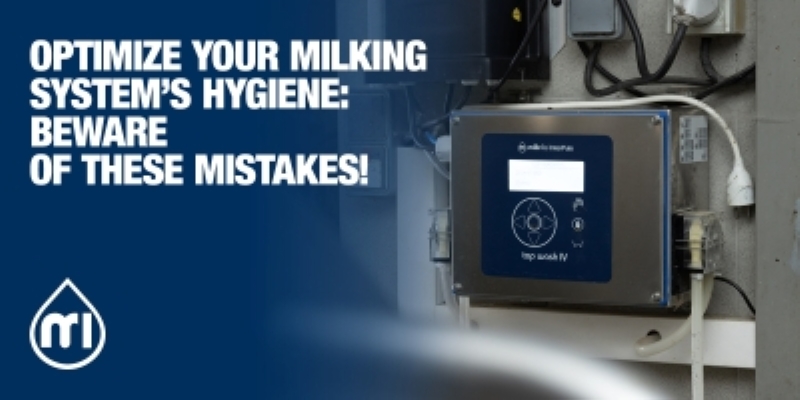
Optimize your milking system’s hygiene: beware of these mistakes!
Listen to this article!
Are you aware of the potential risks related to bad parlour hygiene and the incorrect washing routine of the milking system? Throughout these blog episodes, we aim to demonstrate that proper cleaning should never be underestimated when wishing to improve milk quality and optimize milking performance.
The goal of proper system cleaning is to eliminate dirt and limestone, as well as milk and inorganic residues, after each milking, to ensure the safest condition for the following one.
Nevertheless, when this is not thoroughly and correctly carried out, it might have a negative aftermath on farm profitability.
Therefore, let’s start by understanding the most common mistakes associated with system washing and the risks related to them!
Mistakes to avoid when cleaning your milking system
The first big mistake is not considering cows’ needs, creating an uncomfortable, dirty milking environment. In this regard, the first factor is poor hygiene, determined by incorrect cleaning of the parlour, its components, and the tools used by the farmer during the process, as well as of the barn. More specifically, a dirty environment across the farm can increase the risk of infections and consequent diseases.
This condition facilitates the spread of bacteria, representing a major threat to animals’ health and milk quality.
Consequently, working conditions will be affected by restless cows, which will be more difficult to manage. This further decreases the efficiency of the process.
Another key factor is using the wrong washing parameters for the milking system. In fact, incorrect flush, detergents, and water temperature will not properly sanitize tubes, causing milk residues to remain on the walls, affecting the milk that will flow through it during the following milking session.
Time plays a key role in ensuring thorough cleaning, too. Guaranteeing a minimum contact period between the water, detergents, and the surfaces of the equipment.
In washing cycles using chemical agents, a specific recirculation time is maintained to ensure the fluid passes multiple times through the piping, thereby increasing the quality of the cleaning.
As every component of the milking system, washing solutions need maintenance, too. Therefore, not following periodical checks of their functioning might decrease the cleaning performance, leaving room for bacteria.
Risks related to bad parlour hygiene
As with every bad habit, also not cleaning the milking system properly has negative consequences on farm profitability. Let’s now browse through some possible red flags that might indicate an issue with parlour hygiene!
Lower milk quality, high SCC & mastitis. Poor hygiene can be the worst enemy to your profitability, deeply affecting milk’s bacterial contamination. When in contact with a dirty environment, in fact, pathogens residing on the hoses where milk flows spread across the liquid, dramatically decreasing its quality, while boosting the risk of infection. In fact, during milk extraction, the teat sphincter is open and extremely exposed to pathogens. At a later stage, these might increase the Somatic Cell Count and lead to mastitis.
Cross-contamination. Since the same milking components are used by multiple cows, if these are contaminated, bacteria would more like spread from one cow to another. The result will be a substantial increase in infections.
Uncomfortable, incomplete, and long milking. if you are experiencing this problem during your milking session, bad parlour hygiene might be a cause. In fact, when milking conditions are not optimal, cows easily get stressed and uncomfortable. The downturns of this are several: on the one hand, prolonging their exposure to vacuum, teat-end conditions are threatened, and hyperkeratosis might arise; on the other hand, the longer the time cows spend standing, the higher the probability of issues related to feet and lameness.
Putting your milking components at stake. When underestimating hygiene and maintenance of the milking system, you expose the different parts to excessive usage, dirt, and potential incorrect habits. This will facilitate their breaking or malfunctioning, causing potential additional costs, that undermine the efficiency and the profitability of the farm.
Having shed light on how critical consequences of underestimating parlour hygiene and proper system cleaning are, what will be the benefits of choosing the right washing solution, setting the best washing parameters, and having regular maintenance of the system? Make sure not to miss our next Blog episode!
milkrite | InterPuls thank Simone Pezzi for his contribution.
